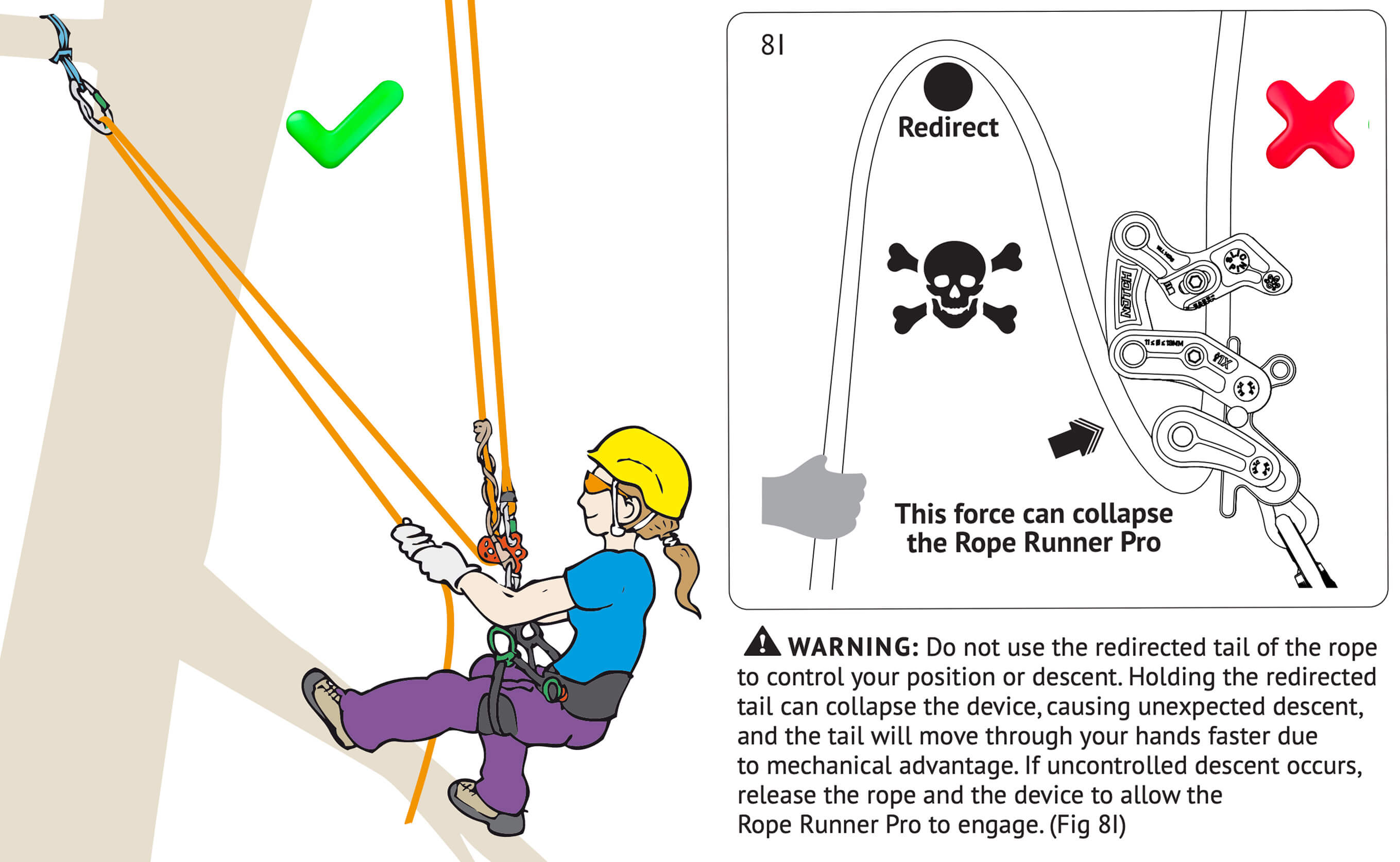Tree climbing is complicated. What is perfectly acceptable in one system can be dangerous in another.
Approximately 18 years ago, the Treemagineers Hitch Climber DbRT (MRS) system established the benchmark in tree climbing configurations. Many climbers started their careers using this system and later transitioned to mechanical devices, running both MRS and SRS.
One of the many benefits of the Hitch Climber is its slack management capabilities. An example utilizes the tail of your climbing line (as pictured on the left side of the image below) to control a swing or stabilise the return from a branch walk.
A good example of this might be a remote station in a tree-climbing competition where the rope angle to the anchor is too steep to allow full release from your lanyard point, particularly if you want to descend directly to the ground.
A Hitch Climber System allows you to use the tail of your rope as a redirection from the bottom Hitch Climber pulley to carefully lower yourself into a safe position using the two legs of rope.
However, the exact opposite is true with the Rope Runner Pro. If you find yourself in the same situation but you are climbing single line using Rope Runner Pro (or RR Vertec), it is dangerous to employ the same method, and you would likely end your climb with a DQ from the comp judges.
The redirected tail, which controls your position or descent, can collapse the RRP, causing an unexpected descent. Once collapsed (with no friction control on the bottom bollard), the tail moves quickly through your hands due to a (reverse) mechanical advantage. The RRP will only re-engage if the rope tail is released.
The short answer is to familiarise yourself with your climbing systems and the associated gear. What works in one system might not work in another.

NOTE FROM RRP DESIGNER KEVIN BINGHAM: Note the hand on the tail, that is the key part. Just having the tail over a branch is not the issue. Pulling yourself or lowering yourself with the tail is the issue.
